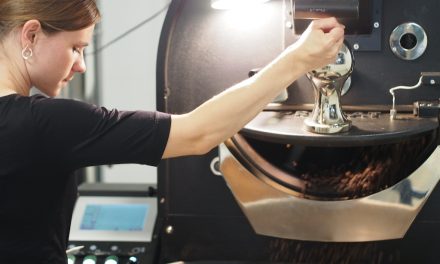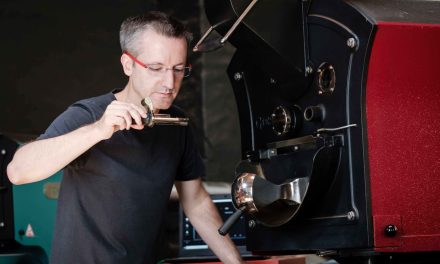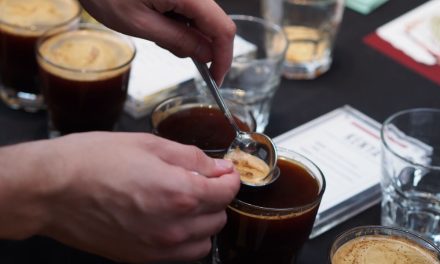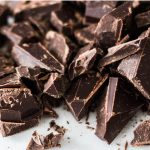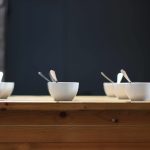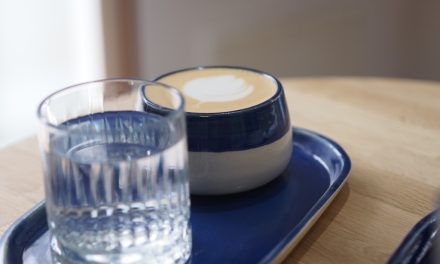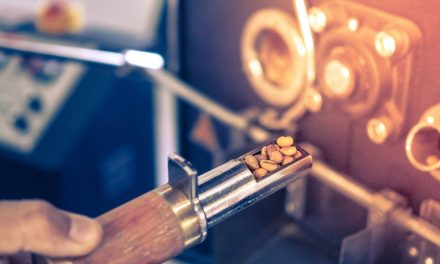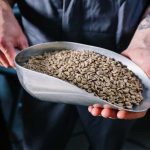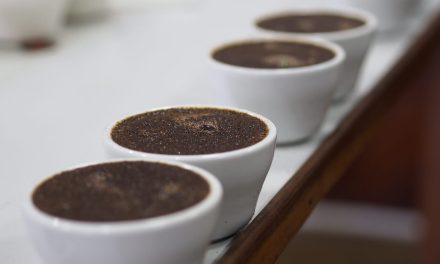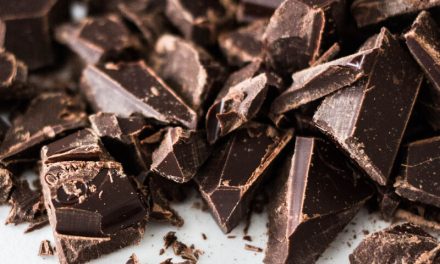
Which one do I use: A Triangel-Test or an In-/Out-Test?
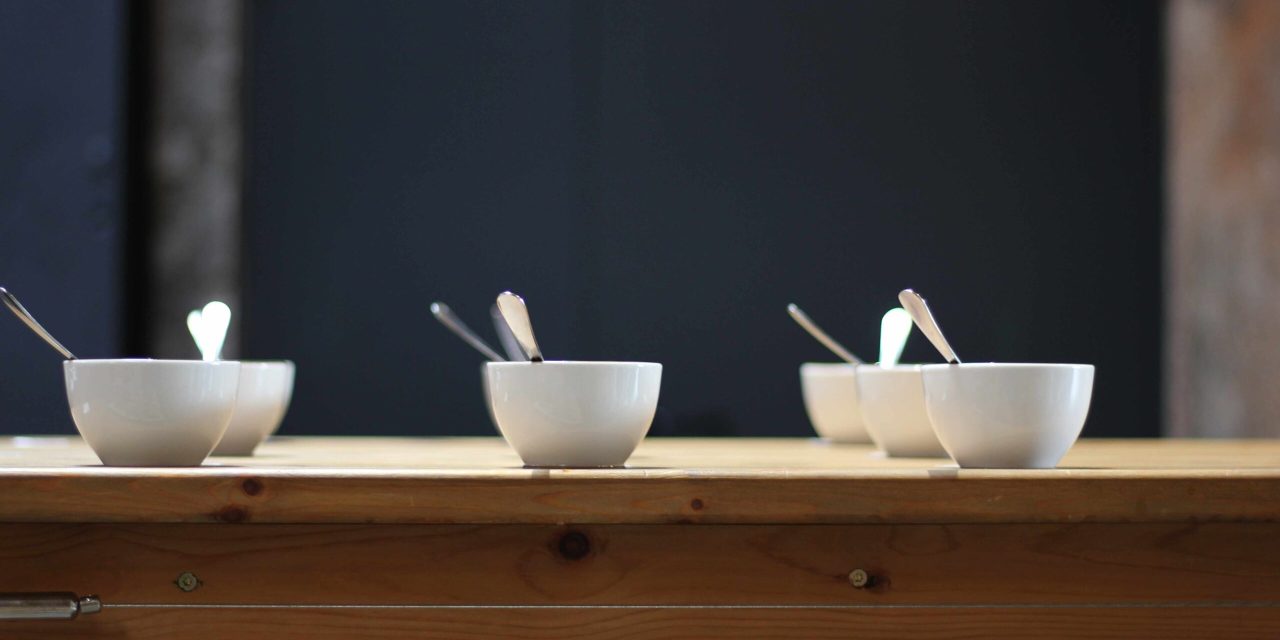
You may have already seen the triangle test in practice, as it is used in the Cupping Championships: participants are presented with three coffees and have to push forward the coffee that differs from the other two.
But is the triangle test also suitable for other situations?
And how does it differ from the in/out test?
This article will help you to
put both tests into sensory test schemes,
understand each individual test and its function,
and get to know the advantages and disadvantages.
Finally, you will receive eight valuable tips if you want to get started right away.
What we want: General differences
Both tests, the triangle test and the in/out test, are methods of so-called difference or discrimination tests. What does that mean?
Let’s imagine we want to roast a product similar to that of a successful competitor. For this, we take our coffee, which we believe is close to the competitor’s product. We check whether there are any general differences between our coffee and a competitor’s coffee.
Pretty much not what we want: THE DETAIL
Both tests are about taking a holistic view of the product, in this case: our coffee.
The opposite of this are tests that only and exclusively compare product samples based on a specific characteristic. For example, which coffee has more sweetness or acidity.
These tests are referred to by sensory experts as “methods for determining characteristic-related product differences”.
Back to our tests and the holistic approach.
In addition to the triangle and in/out tests, there are a number of other tests using this method. However, we do not want to go into that here, but I think it should be mentioned.
6 SITUATIONS FOR A TRIANGLE TEST
We have already seen one situation in which we can apply the triangle or in/out test: we want to roast a coffee product similar to that of our competitor. But there are other situations:
Number 1
We want to reduce the costs of a coffee product by reducing the proportion of one type of coffee in a blend or replacing it with another. Our product should not show any perceivable loss of flavor.
Number 2
Or we have a filter coffee that does not arrive at the consumer. can we give the coffee a new flavor by changing the recipe and make it more attractive for other target groups or preparation types.
Number 3
We want to roast a coffee product similar to our competitor’s (as explained above).
Number 4
We plan to give our coffee to a consumer panel for tasting in order to determine preferences and acceptance. A pre-test shows us if our products can be distinguished at all.
Number 5
We want to introduce new packaging. How do the characteristics of the new packaging compared to our current one, when we think about freshness, aroma and flavor?
Number 6
Our coffees are to be stored differently: Does the new storage location affect the sensory characteristics of our coffee, or do the coffees tastes the same even if they are not touched?
WHAT HAPPENS DURING A TRIANGLE TEST?
We test three coffees, two of which are the same, while the other differs. Our task is to find the coffee that is different. Because we taste all three coffees against each other, this test is also called a triangle test. We will discuss to the advantages and disadvantages in the next paragraph.
AND WHAT HAPPENS IN AN IN/OUT TEST?
Because before that, we will look at the In/Out test. Here, too, we test three coffees, but one of them is marked as the reference coffee. Of the other two coffees, one is identical to our reference coffee. Our task is now to find out which one it is. We start with the reference sample. Then we check coffee one against it. Then we check coffee two against it (presumably that we have two coffees to check).
BOTH TESTS DIFFER IN THESE TWO FEATURES:
Firstly, in the number of comparisons: in the triangle test, we make three comparisons between the coffees. In the in/out test, we only compare two coffees.
Secondly, in the guessing probability: in the triangle test, there is a 1 in 3 chance that we will find the coffee that differs by guessing. In the in/out test, the chance is 1 in 2.
THE GOOD THING ABOUT THE TRIANGLE TEST:
It is very easy to do. This type of test is among the most widely used sensory testing methods. However, we only get limited information about the coffees, namely:
- The differences between the coffees are significant
- They are not significant
- The coffees are similar or not.
- The low “guesswork” probability of 1 in 3 is also a positive aspect.
THE GOOD THING ABOUT THE IN/OUT TEST:
I can define a reference coffee and use it to specify an exact tasting sequence.
In addition, I may have less work to do because I only have to taste twice and I can finish my test series more quickly, so I need less time overall.
Unfortunately, I have to keep in mind that there is a high “guesswork” probability, especially when the differences between the coffees are not very great.
8 TIPS FOR SUCCESSFUL TESTS –
WHETHER TRIANGLE OR IN-/OUT-TEST
Now you know what is meant when you hear the terms triangle test and in/out test. If you want to get started yourself, here are a few more valuable tips:
- If you want statistically reliable results, familiarize yourself with the necessary number of tests or testers before you start your tests. With triangular tests, a number of 12 to 18 testers can quickly be reached, depending on the differences in the coffee. The DIN/ISO 4120 and DIN 10 971 standards for the in/out test (duo-trio test) provide more details.
- All coffees must be at the same temperature.
- The amount of coffee must be the same in all samples.
- Ideally, you should use bowls with dark interiors so that no conclusions can be drawn from the color of the coffee grounds.
- Give each coffee sample a code with at least three digits, i.e. a random sequence of numbers. This is because the brain has a very hard time with random and non-systematic sequences of numbers starting with three numbers. This prevents you and your tasters from recognizing or assigning coffees.
- Before the test, think carefully about how the samples should be arranged.
- If you want to practice to improve your sensory skills, ask a colleague to help you.
- Prepare a results sheet on which you can note or tick your tasting results.


